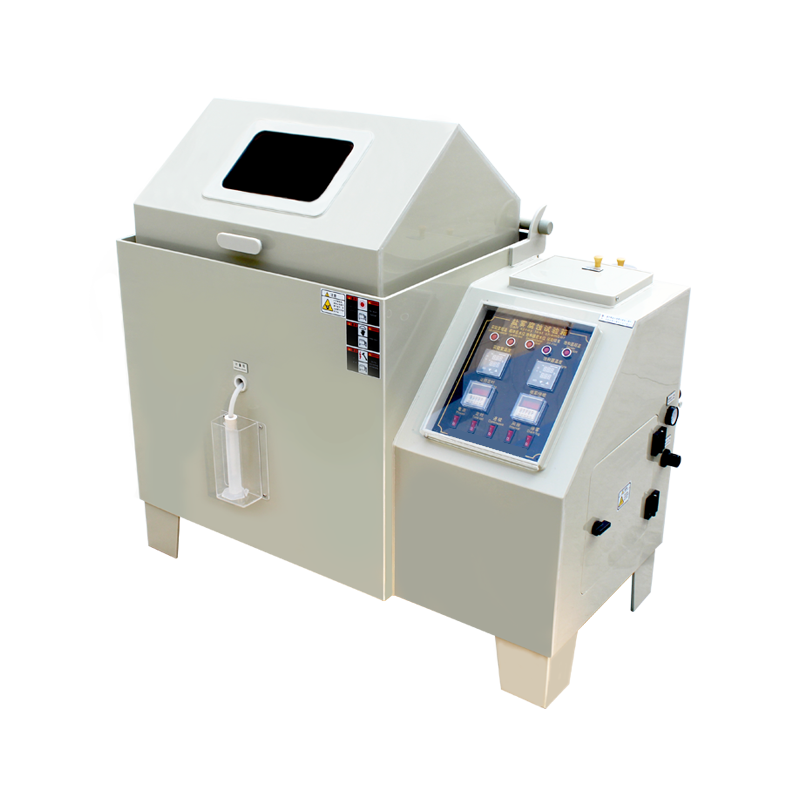Salt spray test chambers are essential equipment for environmental reliability testing, widely used in industries such as automotive, electronics, and aerospace to simulate corrosive salt fog conditions and evaluate material corrosion resistance. However, prolonged use inevitably leads to the buildup of corrosion byproducts, such as salt crystals and oxides, inside the chamber. These residues not only compromise test accuracy but may also damage critical components and shorten the equipment’s lifespan.
How can you efficiently and safely remove corrosion residue from a salt spray test chamber? This is a common concern among lab engineers and quality inspectors. Below, we’ll detail the causes of corrosion, effective cleaning methods, preventive measures, and best maintenance practices to extend equipment life and ensure reliable test data.
1. Sources and Risks of Corrosion Residue
1.1 Primary Components of Corrosion Residue
During operation, atomized saltwater adheres to the chamber’s interior, nozzles, and sample racks. After evaporation, salt crystals (primarily sodium chloride) remain. Additionally, metal parts (e.g., stainless steel or carbon steel) may oxidize due to prolonged exposure to humid, high-salt environments, forming rust or other metal oxides.
1.2 Risks of Corrosion Residue
- Compromised test accuracy: Residual salt crystals alter spray concentration, skewing test conditions.
- Nozzle clogging: Salt deposits can block the spray system, impairing atomization and damaging nozzles.
- Accelerated wear: Corrosion erodes metal components, degrading seals and causing electrical failures.
- Sample contamination: Flaking rust particles may adhere to test samples, distorting results.

2. Cleaning Methods for Corrosion Residue
2.1 Routine Maintenance
After each test:
- Drain residual saltwater to prevent further corrosion.
- Wipe interior surfaces with a soft cloth or sponge dampened with deionized water or a neutral cleaner.
- Inspect and rinse nozzles with clean water to prevent salt buildup.
Quarterly deep cleaning (or every 100 test hours):
- Chemical cleaning (material-dependent):
- Stainless steel: Use 5% acetic acid or citric acid solution.
- Plastic/glass: Neutral detergents only.
- Ultrasonic cleaning: Submerge nozzles, racks, etc., in deionized water or a specialized solution.
2.2 Stubborn Corrosion Removal
For hardened salt crusts or rust:
- Mechanical cleaning: Gently scrub with a soft brush or plastic scraper (avoid metal tools).
- Chemical soak: Immerse removable parts in 5–10% citric/oxalic acid, then rinse.
- Low-pressure rinse: For large chambers, use gentle water spray (avoid high pressure near sensors/circuitry).
2.3 Electrical Component Care
- Power off before cleaning.
- Use isopropyl alcohol or electronics cleaner on circuit boards/terminals.
- Dry thoroughly with compressed air or natural airflow.
3. Preventing Corrosion Buildup
3.1 Use High-Quality Materials
- Prepare salt solutions with analytical-grade NaCl and deionized water.
- Replace saltwater every 24 hours to prevent degradation.
3.2 Optimize Test Parameters
- Control spray volume to minimize oversaturation.
- Maintain stable chamber temperature (35°C ±2°C) to reduce condensation.
3.3 Scheduled Maintenance
- Weekly: Check door seals for integrity.
- Monthly: Clear drainage systems to prevent standing water.
- Quarterly: Calibrate sensors (temperature, humidity, salt concentration).
3.4 Corrosion-Resistant Upgrades
- Choose chambers made of 316L stainless steel (superior to 304).
- Apply Teflon or epoxy coatings to vulnerable parts (e.g., sample racks).
4. FAQs
Q1: Can I use tap water to clean the chamber?
No. Tap water contains chlorides/minerals that worsen corrosion. Use deionized or distilled water.
Q2: How to treat rust spots inside the chamber?
- Light rust: Stainless steel cleaner.
- Severe rust: Sand and repaint with anti-corrosion coating, or replace parts.
Q3: When should nozzles be replaced?
If spray becomes uneven, droplets are oversized, or cleaning fails to restore performance, replace nozzles.
Though often overlooked, corrosion residue can cause equipment failure, inaccurate data, and safety hazards. Regular cleaning, optimized testing, and high-quality consumables will maximize your chamber’s lifespan and ensure precise results.












